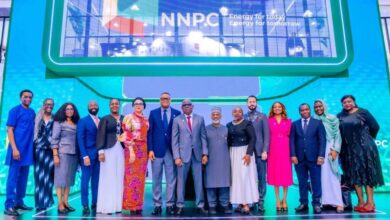A New Axis of Economic Power: Inside China and Russia’s Expanding Partnership

China and Russia are charting a new course for global economic cooperation, as President Xi Jinping on Tuesday reaffirmed Beijing’s commitment to strengthening bilateral investment and trade ties with Moscow, despite what he called a “turbulent external environment.”
The meeting, held at the Great Hall of the People in Beijing, brought together Xi and Russian Prime Minister Mikhail Mishustin, marking another high-level engagement between the two nations at a time of global realignment. The talks followed an earlier meeting between Chinese Premier Li Qiang and Mishustin in Hangzhou, where both sides pledged to deepen economic collaboration and safeguard shared strategic interests.
The dialogue comes as Moscow faces the dual challenge of Western sanctions over the war in Ukraine and a recent slowdown in trade with China — its most critical economic lifeline.
“China-Russia relations have stayed the course toward higher-level and higher-quality development, advancing steadily despite global turbulence,” Xi said. “Safeguarding, consolidating, and developing China-Russia relations is a strategic choice for both sides.”
Beyond Politics: Building a Strategic Economic Engine
President Xi’s remarks underscored China’s long-term view of the Sino-Russian relationship — one anchored not only in geopolitics but also in mutual economic pragmatism.
He highlighted energy, agriculture, aerospace, digital economy, and green technology as key sectors poised for accelerated cooperation. Beijing and Moscow are now seeking to shift from basic trade to deeper industrial integration, co-financing infrastructure, and diversifying supply chains.
Russia, under intense economic sanctions, is increasingly turning to China as a strategic economic stabiliser — a market for its energy exports and a conduit for technology and capital inflows outside Western influence. For China, the partnership offers access to critical commodities, energy security, and expanded leverage in Eurasia.
Mishustin called for both sides to “create favourable conditions for mutual investment and support joint projects,” affirming that cooperation is now essential for long-term resilience.
A Partnership Tested by Sanctions and Global Realignment
The relationship between Beijing and Moscow has evolved dramatically since February 2022, when Xi Jinping and Vladimir Putin signed a “no-limits partnership” just days before Russia’s invasion of Ukraine.
Since then, trade between the two countries has surged, fuelled by record energy transactions, increased yuan-denominated settlements, and new logistics corridors through Central Asia.
However, recent months have seen signs of strain.
Chinese oil companies reportedly paused purchases of seaborne Russian crude after new U.S. sanctions targeted Rosneft and Lukoil, highlighting how global financial pressures are testing Beijing’s ability to navigate its economic alliance with Moscow without antagonising Washington.
Despite these challenges, both governments appear determined to sustain momentum.
In a joint communiqué released after the Beijing meeting, China and Russia reaffirmed plans to “strengthen cooperation in all spheres and respond appropriately to external challenges.”
The document also reiterated Moscow’s support for China’s “One-China” policy and opposition to Taiwan’s independence, reinforcing their shared political alignment against perceived Western encirclement.
BRANDECONOMY ANALYSIS: Strategic Convergence in a Fragmented World
The evolving China-Russia partnership is emblematic of a broader shift in the global economic order, where emerging powers are leveraging trade and finance to build alternative systems of cooperation — outside Western-led institutions.
1. Economic Complementarity
Russia remains a resource powerhouse with vast reserves of energy, minerals, and agricultural commodities, while China provides capital, manufacturing scale, and a global logistics network. Together, they complement each other’s structural needs.
2. Financial Decoupling and De-dollarisation
Both nations are increasingly conducting trade in local currencies, reducing dependence on the U.S. dollar. This move not only mitigates sanction risks but also signals a new geo-financial architecture built around alternative payment systems.
3. The Eurasian Economic Corridor
Through initiatives like the Belt and Road Initiative (BRI) and the Northern Sea Route, China and Russia are expanding trade routes that bypass Western-controlled maritime channels — potentially reshaping global trade flows.
4. Strategic Diplomacy and Risk Management
For China, maintaining economic engagement with Russia is a delicate balancing act. While it bolsters Beijing’s energy and geopolitical security, it must navigate rising Western scrutiny, especially from the U.S. and EU, over dual-use technologies and sanction compliance.
5. Implications for Global Trade Governance
If sustained, the Sino-Russian economic axis could emerge as the nucleus of a new multipolar trade order, inspiring other nations in Asia, Africa, and Latin America to deepen South-South cooperation outside traditional Western frameworks.
The Bigger Picture: From Sanctions to Synergies
While Western powers tighten sanctions on Moscow, China’s strategic calculus appears to be driven by the long game — securing supply chains, stabilising regional partners, and expanding influence in global governance platforms like BRICS+ and the Shanghai Cooperation Organisation (SCO).
Beijing’s partnership with Moscow may not always be smooth, but it represents a deliberate pivot toward economic self-reliance and strategic autonomy, a theme that resonates deeply with nations seeking alternatives to Western-dominated systems.
As the world transitions into a post-globalisation era, the China-Russia economic partnership could well define the contours of 21st-century trade — built on mutual resilience, diversified finance, and geopolitical pragmatism.











